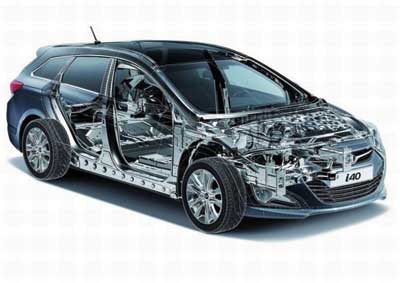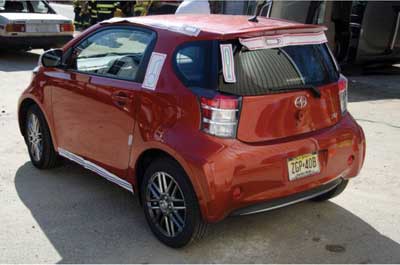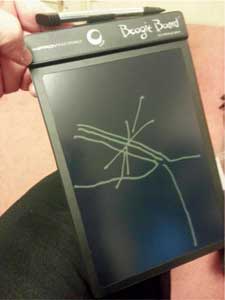By DAVID DALRYMPLE
Many instructors teach extrication, but how many really educate about vehicle rescue? There is a difference, and this difference can be felt on the street. In years past, we did not face the depth or the number of hazards, concerns, and issues that we do on today’s highways. Also, we made do with the tools we had on hand, and the techniques and methodology fared well to the tests of the vehicles of the time. Instruction on the tools, methodology, skills, and the whole mindset was fairly straightforward compared to what instructors are faced with today and, more importantly, what they will be faced with tomorrow. Today’s instructor not only must comprehend an ever-dynamic skill set, spinning the materials into educational programs for the rookies and the crusty, seasoned providers to prepare them for the job, but he also must constantly seek out the latest trends and directions in which vehicle rescue is heading and stay current with the available tools and vehicles of today (photo 1). What a problem and a tangled web indeed! This article will look at some of the various parts, pieces, and pathways that instructors (educators) can use to better prepare to be a facilitator of information to fellow members.
 |
| (1) A vehicle of today (Volvo). (Photos by author.) |
How do you instruct today? Many of the ways it has been done in the past still apply-and will always apply. For example, classroom sessions will always have their place. However, you can also use vehicle dealers as “show-and-tell” venues for a “New Vehicle Day.” Many times, dealers enjoy the positive public relations they receive by having responders at their facility, learning vehicles and thus capturing information that protects not only themselves but occupants (customers) as well. You can also attend a car show that showcases new technology to see firsthand what you may have to face in the future (photo 2). Create practical sessions to reinforce information learned in the classroom.
 |
| (2) A car show.” |
Another option is to create skill sessions based on tool skills and actions, scenarios, or problem solving; extrication challenges are the best examples of these scenario/problem-solving sessions. Held on a variety of levels, from local to national to international, they are where a rescuer can go to see a whole variety of real-world incidents mitigated and managed by groups of rescuers from far and wide. Watching these problems solved will build great “memory muscle” that can beget tremendous real-world results. Good or bad, agree or disagree, the skill set, the results, or even a lack of these instructional attempts will spark discussions and perhaps even inspire others to make additions or subtractions to these courses (photo 3).
 |
| (3) Firefighters during an extrication challenge. |
Every day, the streets of the real world produce a new set of issues for you to solve. So, why not take them into the sandbox, parking lot, drill ground, or tabletop and experience them BEFORE they happen again. “Fight as you train, train as you fight” also applies to vehicle rescue. Materials given to students will never change, but the pathway of those materials might, and do, change. Electronic, downloadable, interactive materials are available and are being used. Some of these materials have a lot of work and thought put into them, so always give their makers proper credit.
How do we make training “real”? And, can this new technology help? “Real world” is the key. We are faced with a large impasse, especially toward practical skill sessions, where their objective involves the vehicles themselves. Almost all of our practical hands-on training is done on vehicles that long have been retired from the roadways. Although they provide the object for some of the basic skill sets, many of today’s techniques need to be conducted on late-model vehicles closer in age to what is actually on the street today. We cannot simulate today’s materials, vehicle construction, and energy absorption techniques on 1980s or 1990s vehicles. We can, however, simulate vehicle hazards we find today. Worn out supplemental restraint system (SRS) air bags (photo 4) can be cut away; secure their edges with duct tape or something similar and clean, and place them in the appropriate vehicle locations using more duct tape. Granted, the air bags will not be live, but they are there to reinforce muscle memory and show that these hazards can be present.
 |
| (4) Depleted SRS air bags “reused.” |
Place orange electric computer cable sheaths along the vehicle’s underside to simulate the high-voltage cables of hybrid and electric vehicles. This may not simulate a vehicle’s equal size and shape, but it will be close enough to assure rescuers who will indeed check for such hazards when they encounter them on the street.
You can also obtain used side SRS cylinders from used, safe systems or recreate a similar device using PVC pipe, magnets, and decals made from computer printer labels. Place these (magnetically, if possible) behind the vehicle trim on the outside of the vehicle post to reinforce the need for pulling interior vehicle trim prior to using cutting/spreading tools. You can also create SRS labeling by using decals printed from various graphic programs. Moditech, a company that produces vehicle crash recovery software, also offers sets of vehicle hazards such as vehicle batteries and SRS on magnetic vinyl that sticks to the vehicle (photo 5). These can be placed under carpets, in cargo areas, or on vehicle exteriors to allow rescuers to key in on these areas and to reinforce the need to look for these hazards.
 |
| (5) Moditech hazard magnets. |
What about the use of live patients? Regarding safety, despite the scope of the skill set being taught and performed and the proper personal protective equipment being equipped and instructed, we rescue a real person on the street. Some scenario building and skill sessions would indeed prohibit the use of a live person (photo 6), but placing a “hose dummy” in a vehicle may work as well in a scenario even if the vehicle is properly prepared and made safe with simulated damage. Today’s simulation mannequins have made leaps and bounds in realism and can add to training. However, costs, usage, and realism may force you to rethink this real-world, real-person challenge.
 |
| (6) Responders using a live patient. |
Using computer simulations would not be my first choice; graphic programs are now the norm. With the advent of tablets, smartphones, and so on, teaching aids that were exclusive to the classroom can now come outside with us. Video is another option, especially with the latest fairly inexpensive, ruggedized, weatherproof cameras currently available. These cameras can be placed on helmets, on rescuers, on tools, and in and on vehicles. They can capture all sorts of footage on information and skills and then can be used in educational programs and presentations or on their own. Similarly, use digital cameras to create stills and videos to insert into program materials. Use electronic whiteboards (photo 7) for drawing and diagramming information. Although firefighting simulations have been available for a while and exist in several formats, an extrication simulator has since been created as an Apple app for an extrication tool manufacturer (photo 8).
 |
| (7) Boogie Board. |
 |
| (8) An extrication tool manufacturer’s vehicle rescue app. |
Many times, we capture details, information, and so on regarding rescue reports, which can be used for a variety of educational pathways. From scenario building to tabletops to situational exercises, these incidents, when “cleaned” of personal information, can be used many times over to improve a variety of skill sets, from pathway creation to tool choices or even to add limitations or changes into the mix.
You need to keep as much realism in your training sessions as possible (photo 9). Incorporate vehicle technology issues and concerns into your education pathways, materials, and skills to make training practical and possible. Elevate training to a level on par with the education practices of today, and always keep your focus on the patient-the reason you are there. Wrap all these items together for your personnel to get an ever-larger real-world picture. This will keep your personnel well prepared, well equipped, and well educated for today’s motor vehicle crashes.
 |
| (9) A real-world incident. |
● DAVID DALRYMPLE is a career EMS provider for the RWJUH Emergency Medical Services in New Brunswick, New Jersey, and the former volunteer rescue services captain for Clinton (NJ) EMS/Rescue. He is the education chair of the Transportation Emergency Rescue Committee-US (TERC). He is certified as an international level extrication assessor and serves on the Expert Technical Advisory Board of the IETRI as the road traffic accident advisor. He is the executive educator for Roadway Rescue LLC, a transportation rescue training company. He writes “Extrication Tactics” columns for Fire Engineering, is a contributing author for Fire Engineering’s Handbook for Firefighter I and II, and authored a DVD educational series on vehicle extrication (Fire Engineering).
David Dalrymple will present “The Future of Vehicle Rescue (It’s Not Just About Extrication)” on Wednesday, April, 24, 2013, 3:30 p.m.-5:15 p.m., at FDIC in Indianapolis.
Fire Engineering Archives

